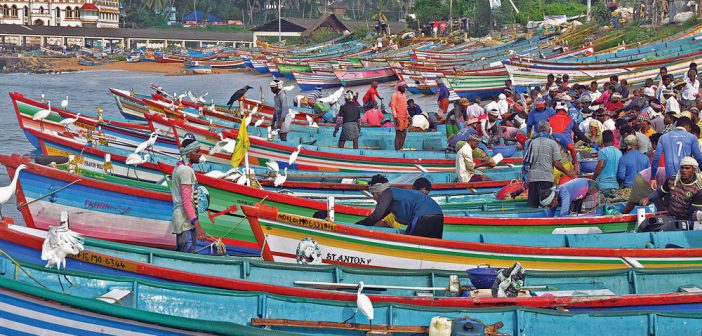India boasts a vast coastline teeming with marine resources, making it a natural contender in the global seafood export market. However, despite its potential, the industry faces a multitude of challenges that hinder its growth and competitiveness. Examining these hurdles is crucial to charting a course for a more robust and sustainable seafood export sector.
The Catch: A Dwindling Resource Base
One of the most pressing concerns is the depletion of fish stocks. Unsustainable fishing practices, coupled with factors like climate change and pollution, have led to a decline in marine life populations. A 2019 report by the Central Marine Fisheries Research Institute (CMFRI) highlighted that over 60% of India’s fish stocks are overexploited, raising concerns about the long-term viability of the industry.
Net Loss: Infrastructure and Technological Woes
India’s seafood processing infrastructure lags behind its competitors in Southeast Asia. Outdated technology, inadequate cold chain facilities, and a lack of proper storage infrastructure lead to significant post-harvest losses. Estimates suggest that these losses can range from 20-30%, significantly impacting profitability and product quality.
A Regulatory Labyrinth: Stringent Measures and Compliance Issues
The Indian seafood industry operates within a complex web of regulations. Stringent quality control measures imposed by importing countries, particularly the European Union (EU) and the United States (US), can be challenging to navigate for exporters. Meeting these stringent standards often requires significant investment in infrastructure and adherence to intricate traceability protocols, which can be a burden for smaller players. Additionally, navigating the labyrinthine domestic regulatory framework further adds to the complexity of doing business.
Financing the Voyage: Limited Access to Credit
The Indian seafood industry is plagued by limited access to credit, particularly for small and medium-scale enterprises (SMEs). High-interest rates and cumbersome loan application processes make it difficult for these businesses to invest in upgrading infrastructure, adopting new technologies, or expanding operations. This lack of access to capital hinders their ability to compete in the international market.
Rough Seas: Competition and Fluctuating Prices
The Indian seafood export industry faces intense competition from Southeast Asian nations like Vietnam and Thailand, which benefit from economies of scale and lower production costs. Additionally, the global seafood market is susceptible to price fluctuations, making it challenging for Indian exporters to secure stable profits. Factors like currency variations and international trade policies can significantly impact export revenues.
Charting a New Course: Solutions for Smoother Sailing
Despite the challenges, there are opportunities to revitalize India’s seafood export industry. Here are some potential solutions:
- Sustainable Fishing Practices: Implementing stricter regulations and promoting responsible fishing practices are crucial for ensuring the long-term sustainability of fish stocks. This includes promoting initiatives like Marine Protected Areas (MPAs) and encouraging the use of eco-friendly fishing gear.
- Modernizing Infrastructure: Investing in modern processing facilities, cold chain infrastructure, and improved storage solutions will minimize post-harvest losses and enhance product quality. Government initiatives and public-private partnerships can play a vital role in facilitating this infrastructure upgrade.
- Streamlining Regulations: Simplifying and streamlining regulations, while upholding quality standards, can ease the burden on exporters, particularly smaller players. Additionally, fostering better communication between regulatory bodies and exporters can ensure smooth compliance processes.
- Financing Solutions: Tailored financing schemes with lower interest rates and simplified application processes can provide much-needed capital for SMEs to invest in infrastructure, technology, and value addition.
- Value Addition: Encouraging value addition through processing and branding can help Indian seafood products command premium prices in the international market. This can involve ready-to-eat meals, pre-marinated products, and innovative product packaging.
- Marketing and Branding: A concerted effort towards targeted marketing and effective brand building can help Indian seafood establish a strong reputation for quality and sustainability in the global market.
Conclusion: Setting Sail for a Sustainable Future
The Indian seafood export industry holds immense potential. By addressing the existing challenges and implementing the proposed solutions, India can navigate towards a more robust and sustainable future for its seafood sector. This will not only ensure the economic well-being of millions of fishermen and allied workers but also allow India to emerge as a leading player in the global seafood market.





